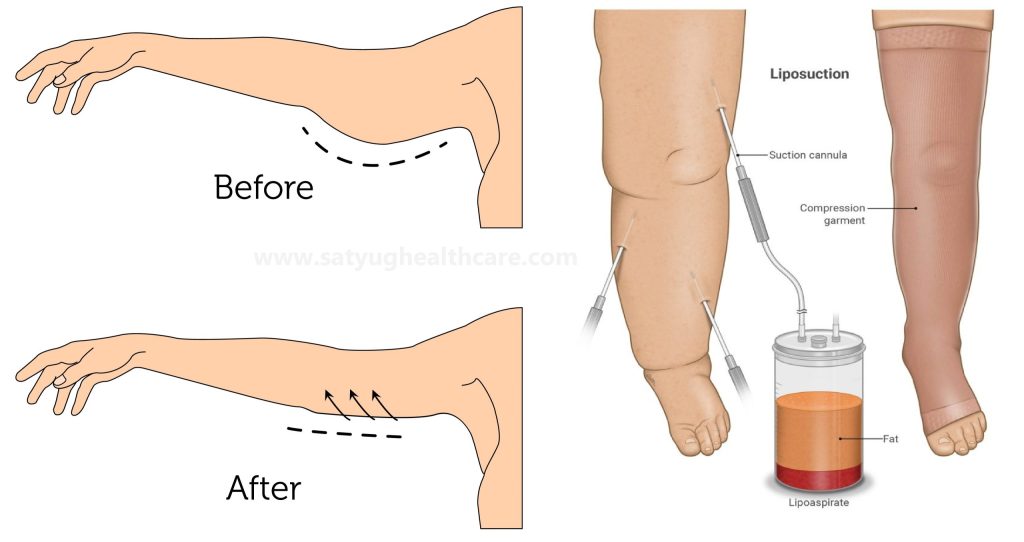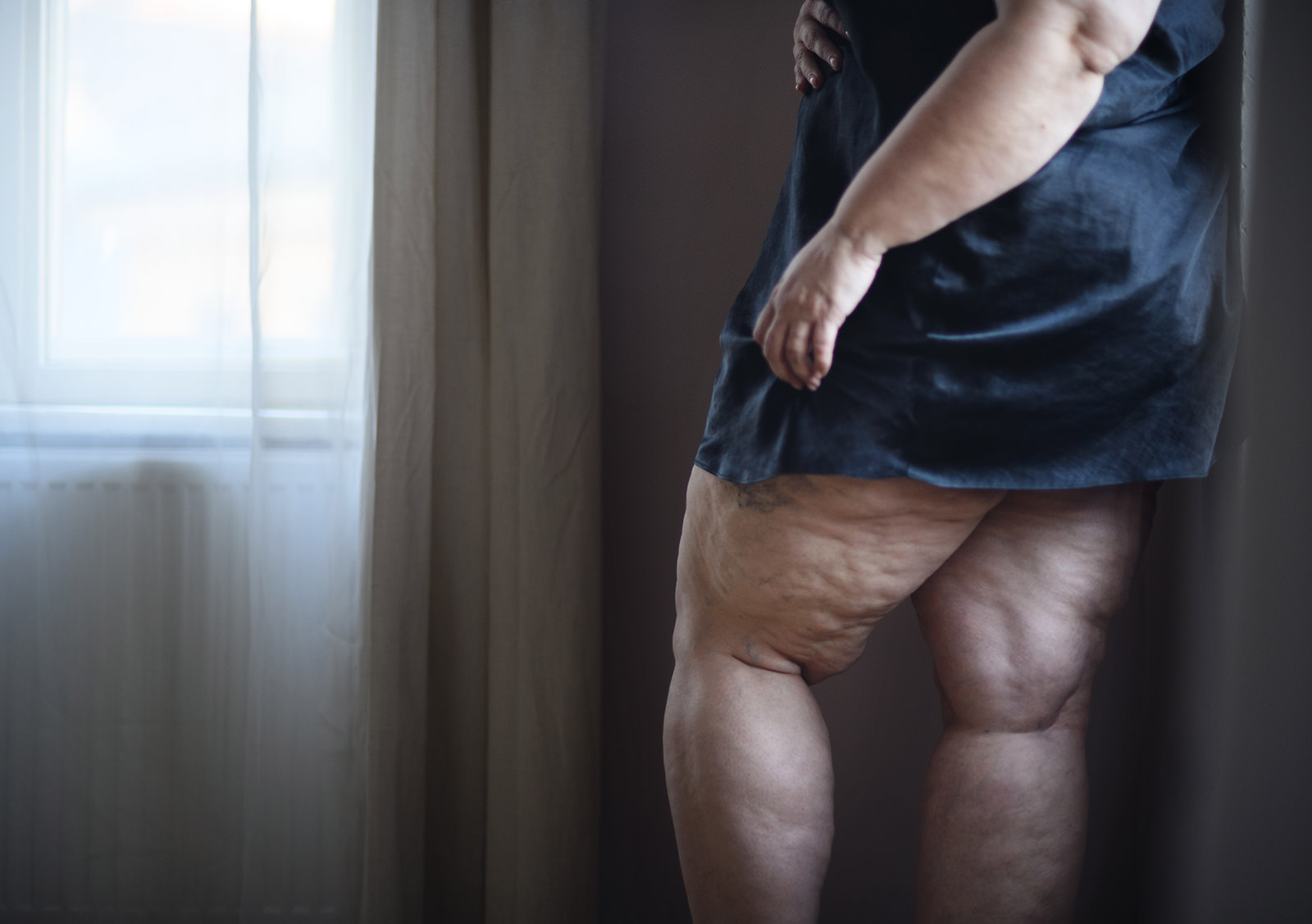Liposuction for lipedema treatment is a game-changer. Unlike traditional weight loss methods, this procedure targets the specific fat deposits caused by lipedema. Many people struggle with swollen limbs and discomfort, feeling frustrated by ineffective solutions. Liposuction offers a chance to reshape the body and alleviate pain.
This treatment not only improves appearance but also enhances mobility and quality of life. Patients often report significant relief after surgery. Understanding how liposuction can help is crucial for those affected by lipedema. It’s time to explore an effective option that can bring real change.
Key Takeaways
-
Liposuction can be an effective treatment for lipedema, helping to reduce pain and improve mobility, so consider discussing this option with your healthcare provider.
-
Understanding the impact of lipedema is crucial; it affects not just physical appearance but also emotional well-being, highlighting the need for comprehensive care.
-
When considering liposuction, research its clinical effectiveness and ask your doctor about specific success rates and patient experiences to make an informed decision.
-
Be aware of safety considerations; choose a qualified surgeon who specializes in lipedema treatment to minimize risks and ensure the best outcome.
-
Follow recovery and aftercare tips closely to promote healing and maintain results, including wearing compression garments as recommended.
-
Keep in mind that while liposuction offers benefits, it may not be a cure for lipedema, so ongoing management and support are essential for long-term health.
Understanding Lipedema and Its Impact
Definition
Lipedema is a chronic disorder. It affects how fat is distributed under the skin. This condition primarily occurs in women. It leads to an abnormal buildup of fat, especially in the legs and arms. The fat can feel painful and tender. Unlike typical obesity, lipedema does not respond well to diet or exercise.
Misdiagnosis Issues
Many people with lipedema face misdiagnosis. Doctors often mistake it for obesity or lymphedema. This confusion happens due to a lack of awareness about lipedema. Many healthcare providers may not recognize its unique symptoms. As a result, patients may receive incorrect treatments. This can lead to frustration and worsening of their condition.
Physical Impacts
Lipedema causes several physical issues. Patients often experience reduced mobility. The excess fat can make movement difficult and painful. Daily activities become challenging. Simple tasks like walking or climbing stairs can feel exhausting.
The condition may also lead to swelling in the affected areas. This swelling can worsen over time. Patients might find that their legs and arms feel heavy and uncomfortable. These physical challenges can limit participation in social activities.
Psychological Impacts
The psychological effects of lipedema are significant. Many individuals experience low self-esteem and body image issues. They may feel embarrassed about their appearance. This can lead to social withdrawal. People with lipedema might avoid public places or gatherings.
Mental health concerns often arise as well. Anxiety and depression can develop due to the constant struggle with body image and mobility issues. Support from friends, family, and medical professionals is crucial for managing these feelings.
Treatment Options
Treatment for lipedema varies based on severity. Compression garments are commonly used to manage symptoms. They help reduce swelling and provide support during daily activities.
Liposuction has emerged as an effective treatment option for some patients. It can significantly improve both physical comfort and appearance. However, proper diagnosis is essential before considering this procedure.
Liposuction as a Treatment Option
Surgical Intervention
Liposuction serves as the primary surgical intervention for managing lipedema. This condition causes abnormal fat accumulation, often in the legs and arms. Standard weight loss methods do not work for these patients. Traditional dieting or exercise fails to reduce the fat associated with lipedema.
Patients often experience pain and discomfort due to this condition. Liposuction can help alleviate these symptoms. It targets the fat deposits specifically linked to lipedema. Many studies show that liposuction improves mobility and quality of life for patients.
Tumescent Anesthesia
Tumescent anesthesia is a common method used during liposuction. This technique involves injecting a large volume of diluted local anesthetic into the fatty tissue. The solution contains lidocaine and epinephrine, which numb the area and minimize bleeding.
Surgeons prefer this method because it offers several benefits. Patients can remain awake during the procedure, reducing risks associated with general anesthesia. Recovery time is often shorter than with other methods.
Water-Assisted Liposuction
Water-assisted liposuction is another technique gaining popularity. This method uses a gentle stream of water to dislodge fat cells while preserving surrounding tissues. Surgeons find this approach less traumatic compared to traditional methods.
Water-assisted liposuction also promotes faster recovery times for patients. The gentler nature of this technique reduces bruising and swelling post-surgery. Many patients report less pain after their procedures.
Ineffectiveness of Traditional Methods
Traditional weight loss methods are ineffective for those suffering from lipedema. Diets and exercise plans often fail to address the unique challenges of this condition. Lipedema patients may lose weight but still retain excess fat in affected areas.
This situation leads to frustration and discouragement among patients. They may feel that their efforts are in vain when they do not see results in their legs or arms. Understanding this limitation is crucial for both patients and healthcare providers.
Clinical Effectiveness of Liposuction
Size Reduction
Studies show that liposuction can significantly reduce the size of extremities affected by lipedema. Research indicates patients experience noticeable improvements in limb circumference after the procedure. For example, a study published in 2019 found that women undergoing liposuction had an average reduction of 30% in leg circumference. This reduction leads to better mobility and enhanced quality of life for many patients.
Patients often report less pain and discomfort post-surgery. A 2020 review highlighted that over 80% of participants experienced relief from pain after liposuction. This finding is crucial since chronic pain is a common symptom of lipedema. Improved limb aesthetics also boosts self-esteem, which is vital for mental health.
Recommended Techniques
Clinical guidelines recommend tumescent liposuction as the preferred method for treating lipedema. This technique involves injecting a solution containing saline, lidocaine, and epinephrine into the fatty tissue. The solution helps minimize blood loss during surgery and reduces postoperative pain.
Tumescent liposuction allows for more precise fat removal. Surgeons can target specific areas effectively, leading to better outcomes. According to the American Society of Plastic Surgeons, this method has become standard practice due to its safety and effectiveness.
Quality of Evidence
While liposuction shows promise, there is limited quality evidence supporting its overall effectiveness. Many studies have small sample sizes or lack long-term follow-up data. A systematic review in 2021 emphasized the need for larger, well-designed trials to confirm these findings.
e researchers argue that more rigorous studies are necessary to establish clear guidelines on who should undergo liposuction for lipedema. Without high-quality evidence, it is challenging to make definitive recommendations about treatment protocols.
The current understanding relies heavily on patient-reported outcomes and small-scale studies. While results are encouraging, they do not replace the need for comprehensive research.
Benefits of Liposuction for Lipedema
Improved Mobility
Liposuction offers significant improvements in mobility for individuals with lipedema. After the procedure, many experience a noticeable reduction in pain. This relief allows them to engage in physical activities more easily. For instance, walking or exercising becomes less daunting. Increased mobility can lead to a more active lifestyle.
Patients often report being able to participate in activities they once avoided. Activities like hiking or jogging become possible again. This newfound freedom enhances their overall quality of life.

Psychological Benefits
The procedure also provides psychological benefits. Many patients experience enhanced self-esteem and body image after liposuction. The change in appearance can be profound. Individuals often feel more confident in social situations.
For example, wearing clothes that fit better can boost confidence levels. Patients frequently report feeling happier and more satisfied with their bodies. This improvement can lead to stronger social interactions and relationships.
Reduced Health Risks
Liposuction can decrease the risk of secondary health issues associated with lipedema. One major concern is osteoarthritis. Excess fat can put stress on joints, leading to pain and discomfort over time. By removing this fat, the pressure on joints decreases.
With less weight on their joints, patients may avoid future complications. They might experience fewer visits to healthcare providers for joint-related issues. This proactive approach leads to long-term health benefits.
Long-Term Outcomes
Long-term outcomes after liposuction are generally positive. Many patients maintain their results with a healthy lifestyle. Regular exercise and balanced nutrition are crucial for sustaining the benefits of the procedure.
Patients who commit to these changes tend to enjoy lasting improvements in both physical and emotional well-being. They often find it easier to manage their weight, which further enhances their health.
Safety and Considerations in Treatment
Patient Health Profiles
Patient health profiles play a crucial role in determining suitability for liposuction. Surgeons assess various factors before proceeding with the treatment. These factors include age, overall health, and medical history. Patients with conditions like heart disease or diabetes may face higher risks during surgery.
Surgeons also evaluate the severity of lipedema. Those with advanced stages might require additional treatments alongside liposuction. A thorough pre-operative assessment ensures that patients are fit for the procedure. This step helps minimize complications and promotes better recovery outcomes.
Risks and Complications
Liposuction carries potential risks and complications. Common issues include infection, bleeding, and fluid accumulation. Some patients may experience changes in skin sensation or contour irregularities. These complications can affect the overall results of the surgery.
In rare cases, serious complications arise. Deep vein thrombosis (DVT) is one such risk, where blood clots form in the legs. Pulmonary embolism is another serious condition that can occur when clots travel to the lungs. Both conditions can be life-threatening.
Patients should discuss these risks with their surgeons before surgery. Understanding potential complications allows patients to make informed decisions about their treatment options.
Qualified Surgeons
Choosing a qualified and experienced surgeon is vital for successful liposuction outcomes. Surgeons should be board-certified and have specific training in performing liposuction procedures for lipedema. Experience matters; surgeons who regularly perform this type of surgery tend to achieve better results.
Patients should research potential surgeons thoroughly. Reading reviews and asking for referrals from previous patients can help gauge a surgeon’s reputation. A good surgeon will provide clear information about the procedure, risks, and expected outcomes.
Consultations are essential before making a decision. During these meetings, patients can ask questions and express concerns. A trustworthy surgeon will address all inquiries honestly and transparently.
Guidelines for Liposuction Use
Clinical Recommendations
Clinical guidelines suggest using liposuction for patients with lipedema who do not respond to conservative treatments. Conservative treatments include compression garments, physical therapy, and diet changes. These methods may help manage symptoms but often fail to provide significant relief. Studies have shown that liposuction can reduce excess fat and improve mobility. The American Society of Plastic Surgeons supports this approach, stating that it can enhance quality of life for these patients.
Patient Selection Criteria
Selecting the right patients is crucial for successful outcomes. Health status plays a vital role in determining eligibility for liposuction. Patients must be stable and free from major health issues. Those with cardiovascular diseases or uncontrolled diabetes may face higher risks during surgery. The severity of lipedema also influences selection. Patients with moderate to severe lipedema tend to benefit more from the procedure than those with mild cases.
A thorough evaluation is essential before surgery. Doctors should assess the patient’s medical history and perform a physical examination. Imaging studies may help visualize the extent of fat deposits. This comprehensive approach ensures that only suitable candidates undergo the procedure.
Established Protocols
Following established protocols enhances patient safety and treatment efficacy. Surgeons should adhere to guidelines set by professional organizations. These guidelines outline best practices for performing liposuction on lipedema patients. Proper technique minimizes risks and complications during surgery.
Surgeons must use tumescent anesthesia, which involves injecting a solution into the target area. This method reduces bleeding and pain during the procedure. Using power-assisted liposuction can improve fat removal efficiency.
Post-operative care is equally important. Patients should follow specific instructions regarding activity levels and wound care after surgery. Regular follow-ups will help monitor recovery and address any concerns early on.
Emotional Considerations
Lipedema affects not only physical health but also emotional well-being. Many patients experience feelings of frustration and isolation due to their condition. Liposuction can significantly improve body image, leading to enhanced self-esteem.
Support groups and counseling may provide additional benefits. Connecting with others facing similar challenges can foster a sense of community and understanding.
Limitations and Challenges in Research
Scarcity of Studies
Research on liposuction for treating lipedema lacks quality. Few controlled studies exist that specifically address this treatment’s effectiveness. Most available studies are observational, which means they do not have a control group for comparison. This limits the ability to draw strong conclusions about the benefits and risks of liposuction for lipedema patients.
Many studies report positive outcomes, but they often lack rigorous methodology. Without high-quality data, it’s difficult for healthcare providers to make informed decisions. The absence of standardized protocols also complicates the evaluation of results across different studies.
Geographical Limitations
Most research on liposuction for lipedema comes from specific regions, particularly Germany and The Netherlands. These countries have advanced medical facilities and specialized clinics focusing on this condition. However, this concentration creates a geographical limitation in understanding how effective liposuction is worldwide.
Studies conducted in these regions may not reflect the experiences of patients in other areas. Cultural differences in healthcare practices can affect treatment outcomes. Patients in countries with fewer resources may not receive the same level of care or support during recovery. This raises questions about the generalizability of findings from these studies.
Need for Comprehensive Research
The current body of research emphasizes the need for more comprehensive studies. More diverse populations should be included to enhance understanding of liposuction’s effectiveness across different demographics. Larger sample sizes will help create a clearer picture of expected outcomes.
Long-term follow-up studies are crucial. They can provide insights into the sustainability of results after liposuction. Understanding potential complications over time is equally important for patient safety.
Healthcare professionals need clear clinical guidelines based on robust evidence. Current recommendations often stem from limited data, which may lead to inconsistent practices among providers. More comprehensive research would strengthen clinical recommendations and improve treatment options for patients with lipedema.
Investing in high-quality studies can pave the way for better treatment protocols. Researchers should focus on randomized controlled trials to establish a solid evidence base. Collaboration between international researchers could also broaden perspectives and insights.
Recovery and Aftercare Tips
Post-Operative Care
Post-operative care is crucial after liposuction for lipedema. Patients should wear compression garments as directed by their surgeon. These garments help reduce swelling and support the healing process. Typically, they need to be worn for several weeks. Alongside compression, physical therapy plays a vital role. Engaging in gentle exercises can improve mobility and reduce discomfort. A physical therapist can provide tailored exercises that suit individual recovery needs.
Lifestyle Modifications
Maintaining results after surgery requires lifestyle changes. A balanced diet is essential. Focus on whole foods, such as fruits, vegetables, lean proteins, and whole grains. Staying hydrated also aids recovery and overall health. Regular physical activity is important too. Aim for at least 150 minutes of moderate exercise each week. This helps maintain weight and improves circulation. Avoiding excessive salt can minimize fluid retention, which is beneficial.
Follow-Up Appointments
Follow-up appointments are necessary for monitoring recovery progress. These visits allow healthcare providers to assess healing and address any concerns. Regular check-ups help ensure that patients remain on track with their recovery goals. Surgeons may recommend follow-ups at specific intervals, often within the first few weeks post-surgery. Attending these appointments allows for adjustments in care if needed.
Emotional Support
Recovery from liposuction can also have emotional aspects. Many patients experience a mix of feelings during this time. Seeking support from friends, family, or professional counselors can be helpful. Sharing experiences with others who have undergone similar procedures can provide comfort and encouragement.
Long-Term Management
Long-term management of lipedema is essential to prevent recurrence. Patients should stay informed about their condition and recognize early signs of complications. Education about lipedema will empower individuals to make informed decisions regarding their health. Joining support groups or online communities can offer additional resources and connections.
Pensamientos Finales
Liposuction offers a promising treatment for lipedema, addressing both physical discomfort and emotional challenges. It can greatly enhance your quality of life, helping to reduce pain and improve mobility. Understanding its benefits, safety, and guidelines is crucial for making informed decisions about your health.
If you or someone you know struggles with lipedema, consider discussing liposuction with a qualified healthcare provider. This could be a game-changer for managing symptoms and reclaiming your life. Take charge of your health journey today—explore your options and don’t hesitate to seek expert advice.
Frequently Asked Questions
What is lipedema?
Lipedema is a chronic condition characterized by an abnormal accumulation of fat, primarily in the legs and arms. It often leads to pain, swelling, and mobility issues, significantly impacting quality of life.
How does liposuction help with lipedema?
Liposuction can remove excess fat deposits associated with lipedema. This procedure may alleviate pain, improve mobility, and enhance overall body shape, providing significant relief for those affected.
Is liposuction safe for lipedema treatment?
Yes, when performed by a qualified surgeon experienced in treating lipedema, liposuction is generally safe. However, it’s essential to discuss potential risks and complications during your consultation.
What are the benefits of liposuction for lipedema?
Benefits include reduced pain and swelling, improved mobility, enhanced self-esteem, and a more balanced body appearance. Many patients report a significant improvement in their quality of life post-surgery.
How long is the recovery period after liposuction?
Recovery typically takes 1 to 2 weeks, but full healing may take several months. Patients should follow aftercare instructions closely to ensure optimal recovery and results.
Are there any limitations to liposuction for lipedema?
While effective, liposuction may not completely eliminate all symptoms of lipedema. Some patients may require additional treatments or therapies to manage their condition fully.
What guidelines should be followed before undergoing liposuction?
Consult a specialist familiar with lipedema treatment. Ensure you meet health criteria and understand the procedure’s risks and benefits. A comprehensive evaluation will help tailor the best approach for your needs.





